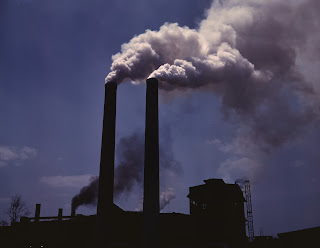Department of Mineral Resources (DMR) has been knocking on your door about the dust emissions on the mine. Or perhaps the community has been complaining about pollution. Whatever your motivation - are you aware of what dust control entails? What is available on the market? What is regarded as "best practice"? What additional benefits can be offered? Who are the market leaders?
A scenario that presents itself too often is a request for quote (or better known as a RFQ) for the supply of a dust control unit for a mine. The RFQ would typically contain detailed specifications formulated by the engineering department and passed on to the supply chain managers that subsequently issued the RFQ to potential suppliers that has been identified by the commercial department. Nothing out of the ordinary there. Or is there? What really happened is that the engineering department had collaborated with the commercial department to come up with a scheme to waste funds.
Let me explain. What should have happened is for the engineering department to first recognise the fact that they are mining experts and not emission control experts. Therefore, it would make sense to consult with experts on the matter, and come up with a scope of supply that makes sense.
A logical starting point would be to speak to your neighbours. Remember that, when it comes to ground water and air contamination, your neighbour would want you to put in at least as much effort as he does. Because pinning down an environmental criminal is like trying to 'pin the tail on the donkey'. Pollution created by your neighbour could settle on your front porch and make you look like the guilty one, and similarly, measures implemented by your neighbour could benefit you. If both you and your neighbour implement effective measures, the DMR will have to look elsewhere for a culprit. Another very important reason for looking at what your neighbour does to curb emissions, is to form an idea of what works and what doesn't.
But there are a few simple considerations that should cross your mind before you decide on how to approach the decision making process for a dust control system:
- Extraction or suppression
- Chemical or water only
- High or low pressure (fog or spray)
A dry filtering system (bag house) is an effective way to control dust emissions. Airborne dust is sucked up through ducting chutes above each transfer point. The dust is then collected via filtering of the air.
An alternative is to separate the air and dust via wet cyclone scrubbers. However, capital expense and maintenance cost often makes this option not viable in most cases:
- High capital cost - multiple extraction points required.
- Labour intensive and costly maintenance
- Short lifespan
- High energy cost
- Waste product to deal with (collected fines)
- No lasting (downstream) benefit
Even if you have had no previous experience with emission control technologies, you could implement an effective program to reduce airborne dust. The key is to speak to the right people and consider the following:
- Does the potential supplier have reference sites
- Can you visit the sites
- Do they effectively reduce emissions
- How many sites does the potential supplier have
- Does he have experience with your material
- Are the system maintenance friendly (cost effective)
- If chemicals are used - are the chemicals safe for employees
- Will the chemicals interfere with mining processes
- Can they prove emission levels
- Can they prove consumption figures
Currently the company serves Manganese, Iron Ore, Limestone, Kimberlite, Coal, Chrome and Nickel mines effectively.
Emission control is serious business, and Benmarc is a serious company.



No comments:
Post a Comment